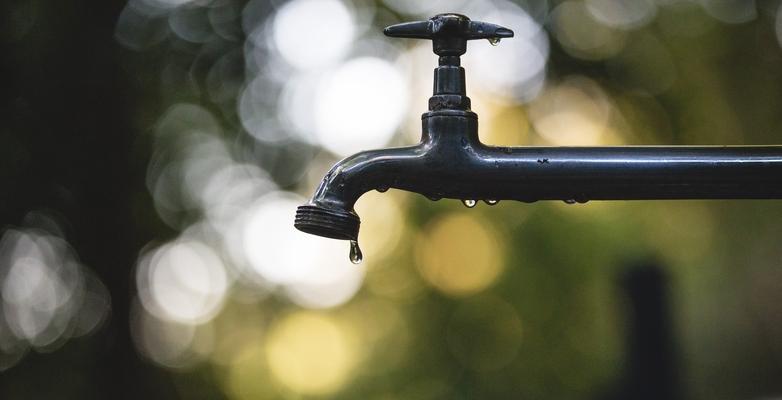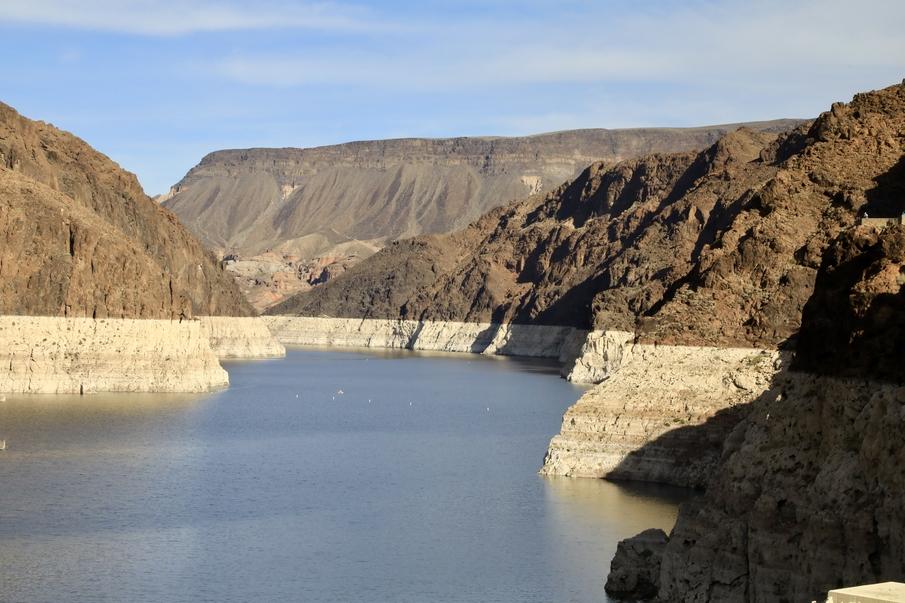
Is Our Water Infrastructure Ready for Climate Change?
Frontline communities will be hit first and worst – the ones that aren’t experiencing this problem already, that is.
The climate crisis impacts every drop of H2O on the earth’s surface.
And we’re not just talking about the usual suspects – shrinking sea ice, melting glaciers, and rising sea levels – here either. From the tiny stream in your grandparent’s backyard to the mighty rivers that transport goods, power towns and cities, and very importantly, provide recreation and fresh drinking water to millions, waterways large and small are being transformed by climate change – and far quicker than even experts had predicted.
For many here in the US, that means the main source of their potable water – whether that’s a major river, lake, reservoir, or aquifer – could be among the nearly half of the nation’s fresh water basins that may not be able to meet monthly water demand by 2071, according to a 2019 study. That’s less than 50 years down the road.
It stands to reason that at some point in the not-so-distant future, the sources of water for communities all across the country may need to change to keep up with climate change and growing demand. Many already do. But in some places where that’s already happened, usually owing to failing infrastructure and systemic neglect, the consequences have been unexpected and even tragic.
As climate change makes drinking water harder and harder to come by in some places, it’s vital to remember: swapping around water sources is more complicated than you think – and playing fast and loose with peoples’ water supplies can be deadly.
What’s Happening?
If this wasn’t already clear: A few things.
As the world becomes warmer, more and more water evaporates from the surface of our oceans, rivers and lakes, and soils, and enters the atmosphere. More water in our atmosphere means more intense precipitation and more intense storms when all that moisture cools and is carried over land – whether by a hurricane, atmospheric river, or the good old fashioned jet stream – leading to historic flooding and more and more frequent agricultural washouts across the US and in regions all around the world.
But while some areas are experiencing more intense precipitation, many others are receiving far less.
It’s the climate crisis doing what it does best: making a bad situation worse. Precipitation patterns are shifting, and many regions with traditionally dry climates are seeing even less rain than they’re used to – at the same time that ongoing warming increases evaporation from the soils and any nearby bodies of water. At its most extreme, when formerly fertile land is transformed into something else entirely, we call it “desertification.”
Elsewhere, the (literal) downriver effects of even minor shifts in climate are being felt by millions of people hundreds of miles away from the source of the change.
Take a major river, like the Colorado River in the US Southwest. Its headwaters are high up in the mountains, fed primarily by melting snowpack. Snowpacks around the world are diminishing because “rising temperatures increase the fraction of winter precipitation that falls as rain rather than snow and also shorten the cold season, so there’s less time for snow to even occur,” according to Yale Climate Connections. Plus, with warmer temps arriving earlier, “snowmelt occurs sooner and faster than usual.”
Changing Water Cycle = Changing Water Supplies
You don’t have to be a scientist to understand that with less and less meltwater feeding its headwaters, annual precipitation dropping across its basin, and warmer temperatures evaporating more water from it – not to mention the land all around it, which then demands additional irrigation to retain agriculture – an entire river system soon begins to dwindle. And with it, the drinking-water reservoirs it once filled.
Lake Mead has become a desperate example of the climate crisis in the United States. Fed by the once-mighty Colorado, it currently sits at historically low levels.
The largest reservoir in the US has seen its water levels drop by nearly 10 feet in just the last two months (as of July 2022), and was filled to just 27% of its maximum capacity.
Unsurprisingly, water conservation declarations blanket California, Arizona, Utah, and Nevada communities, while the LA Times declares: “Major water cutbacks loom as shrinking Colorado River nears ‘moment of reckoning’.”

(Via Getty Images)
America’s Clean Water Problem
At the same time, when it comes to how well America has treated the water it currently does have, Time magazine summed it up well:
More than 30 million Americans lived in areas where water systems violated safety rules at the beginning of last year [2019], according to data from the Environmental Protection Agency. Others simply cannot afford to keep water flowing. As with basically all environmental and climate issues, poor people and minority communities are hit hardest.
For no small number of these people, a central reason for their current water insecurity isn’t the climate crisis at all – at least not yet. It can be traced back to the failure of existing water infrastructure and old pipes leeching harmful elements like lead into drinking and recreational water. The EPA estimates that there are 6 to 10 million lead service lines in the country.
Leaching occurs when water enters a pipe and corrodes, or breaks down, the metal piping, allowing ions from the metal to enter the drinking water being carried by the pipe into a home or business. Waters with high acidity or low mineral content are particularly good at corroding pipes and fixtures.
(It’s worth noting here that, according to Scientific American, warming temperatures are themselves leading to increases in water acidity, more broadly: “a growing body of research links these hotter, drier conditions to increasingly acidic water, which causes rocks to shed more minerals into waterways.”)
Importantly, the ongoing water emergency plaguing communities across the country is also part of a larger pattern of injustice, one that systemically targets specific social and racial groups.
Or, as Climate Reality Engagement Director Krys White calls it, “neglect for life.”
White is a co-founder of Black Millennials 4 Flint, an environmental justice organization founded in response to the Flint Water Crisis to take action against the crisis of lead exposure in Black and Latino communities.
>> Read More: Building Community Resilience: The Path Toward Environmental Justice <<
In 2014, the city of Flint, Michigan switched the source of its drinking water supply in what was described at the time a cost-saving measure. Pumping water from the Flint River until a new water pipeline from Lake Huron could be built was far cheaper than continuing to pipe treated water to Flint residents from Detroit, as had been done for the nearly 50 years prior.
Never mind that the river water was polluted and highly corrosive. And that corrosiveness was never properly treated. Leading the city’s aging pipes to break down, leaching toxic levels of lead into residents’ tap water.
When the predominately Black community rose up to demand answers to why their water had becoming foul-smelling and discolored, they were ignored. Officials continued to maintain that the water was safe – until they were proven very, very wrong (via NRDC).
“When the infrastructure is neglected, it’s purposeful,” White said.
Michigan officials found that the series of events leading to the Flint Water Crisis had been an example of systemic racism.
And while the situation in Flint was born out of systemic injustice and disregard for Black lives, and not necessarily precipitated by climate change, a basic structural fact of the crisis remains that should give everyone who just looked at that photo of Lake Mead above and shook their head pause:
In a small city like so many others across the country, changing from one water source to another had allowed dangerous elements to leach from old pipes into drinking water and put thousands of families at risk.
Remember that there are currently 6 to 10 million lead service lines in the country. And that by 2071, nearly half of all freshwater basins across the country might not be able to meet monthly demand, likely necessitating water being piped in from elsewhere.
If you put two and two together, you get a brewing storm – but luckily, it’s one where a little awareness and accountability can go a long way.
Fixing A Broken System
Every pipe is not created equal.
Plastic, concrete, and metals like steel, galvanized steel, ductile iron, copper, and aluminum make up the majority of piping used to distribute drinking water in the United States. What does and doesn’t corrode these different types of metals varies.
As new pipes are laid to replace dangerous old ones, and as water supplies change from one river to another one further away, the breakdown of the town’s pipe make up and water supply (and changes to that supply, as they happen) and the treatments used in response in drinking water must be top-of-mind to assure we don’t allow the climate crisis to create a million more little Flint, Michigans all around the country.
It’s vitally important that the treatments being used in the water not degrade the piping.
We have yet to hear a single American complain that their drinking water is too free of toxic chemicals.
What You Can Do
The Biden-Harris Administration has set aside $4 billion from the Bipartisan Infrastructure Law and annual appropriations for use to begin replacing all of America’s lead pipes.
There are also water treatment options that can reduce the corrosive potential of water.
“The tendency of water to be corrosive is controlled principally by monitoring or adjusting the pH, buffer intensity, alkalinity, and concentrations of calcium, magnesium, phosphates, and silicates in the water,” the CDC writes. “Actions by a water system to address these factors can lead to reduced corrosion by reducing the potential for the metal surface to be under the influence of an electrochemical potential.”
All of which is to say: Awareness is key here. There’s plenty you can do to make sure the climate crisis doesn’t threaten water quality in your community.
If you are concerned about the quality of water right now, you can contact your state’s drinking water certification officer to obtain a list of certified laboratories in your state to inquire about testing and other services.
Also, be sure to ask if your water utility is utilizing the EPA’s Creating Resilient Water Utilities (CRWU) initiative to gain “practical tools, training, and technical assistance” in forming climate resilience strategies and assessing the risk extreme weather and other climate factors play in its assets and operations.
You can likely start this conversation by sending an email to your water utility’s customer service or directly through its website.
Join a Climate Reality chapter in your town, city, or region to work alongside other advocates concerned about water safety. In the months ahead, many chapters will be working to hold their local and state elected officials accountable for the spending of funds allocated through the Bipartisan Infrastructure Law and the more recent Inflation Reduction Act (IRA), including those for updated water pipes.
Finally, if you are already taking action and looking to take your commitment a step further, consider becoming a trained Climate Reality Leader at our upcoming training in Houston, Texas. Power-Up: A Climate Reality Training on Advocacy in Action is for climate activists across the US Gulf south looking to build local power and advance region-specific climate solutions.
No matter what action you take, we hope you’ll take it with us. Join us and help end the climate crisis and create a safe, sustainable future for all people.
Sign up for our email list today to get started:

